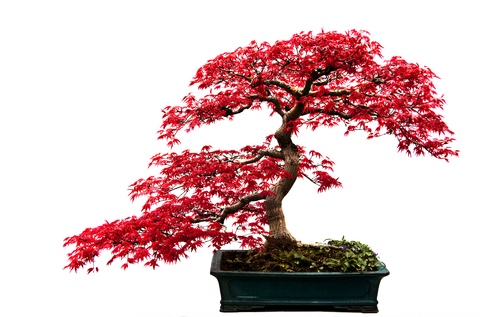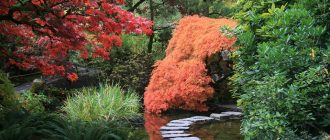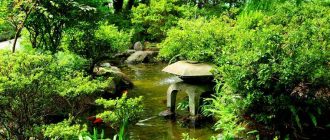Find out how the otherwise huge Japanese maple trees can be pruned down to form a Japanese maple bonsai.
If you want to test the creative juice in you then growing a bonsai tree is something that can really prove your worth. The choices one has are unlimited when it comes to growing a bonsai. The Japanese maple bonsai is an interesting choice to work with.
The Japanese maple bonsai is relatively easy to grow and hardy by nature. When worked according to the right guidelines the results can be truly amazing. The maple bonsai is known as the Acer Palmatum in botanical terms and is an excellent plant for miniature growing.
The unique thing about the Japanese maple bonsai is that it shows both juvenile as well as adult characteristics. The maple tree in the wild can grow to great heights but careful pruning and training can transform it into a wonderful bonsai specimen.
The ideal Japanese maple bonsai to start off with should have a four inch thick trunk or more. This will give you the freedom to train the tree in a number of different styles. If you are predetermined about the kind of style that you want your maple bonsai to grow along such as the Taper or Apex styles then you should go with two trunk chops.
Starting off with a Japanese maple bonsai does not involve a lot of financial investments because it is a relatively cheap plant. The spring seasons brings with it the amazing red and purple foliage that brings the bonsai maple to life.
Shaping your Bonsai
The interested individual can even start his Japanese maple bonsai from seedlings. This would of course take a lot more patience as the tree would take its time to sprout. Alternatively you can buy yourself a Japanese bonsai maple that has already been started. This would be around four to six inches in height.
The Japanese maple bonsai is full of surprises during its growing stages. You will find it to be sprouting from different adventitious buds and that too from dormant buds that are located between internodes. You will find that once you give it an initial trunk chop a spiral of branches will be produced from otherwise dormant buds.
The nodes on the bonsai appear to bear similitude to bands on young trees that have not yet matured. The chopping and pruning of the Japanese maple bonsai needs to be done with utmost caution so that it progresses in a healthy fashion.
Those with prior experience in growing Japanese maple bonsais will always advise you to go with vigorous seeds that are large and have low internodes. Growing along these lines your bonsai will have its lowest branch at six inches.
The seedlings should be kept in small containers and pruned until the roots begin to colonize the pots. This is the easiest way to go about growing a Japanese maple bonsai. Furthermore if you grow your bonsai along these lines you will have plenty of room to add soft curves towards the lower end of the tree which can produce an amazing visual effect.





